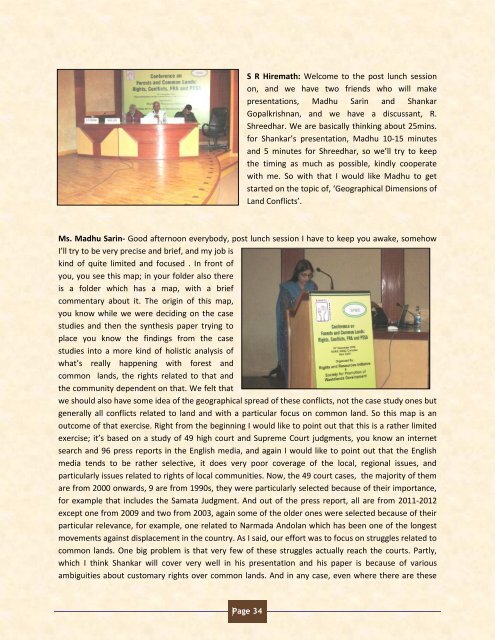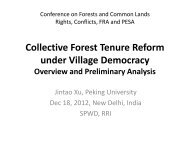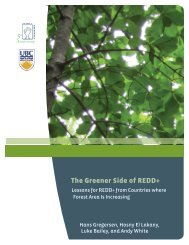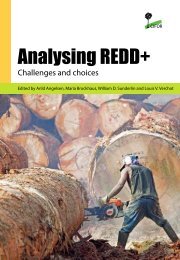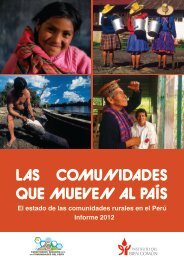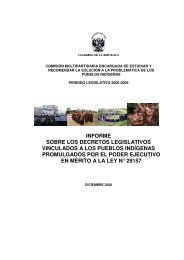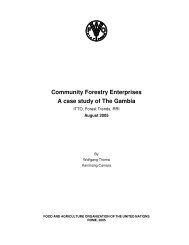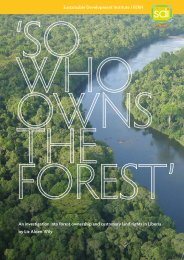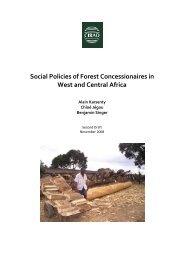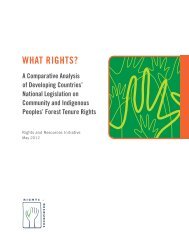Concept Note - Rights and Resources Initiative
Concept Note - Rights and Resources Initiative
Concept Note - Rights and Resources Initiative
Create successful ePaper yourself
Turn your PDF publications into a flip-book with our unique Google optimized e-Paper software.
S R Hiremath: Welcome to the post lunch session<br />
on, <strong>and</strong> we have two friends who will make<br />
presentations, Madhu Sarin <strong>and</strong> Shankar<br />
Gopalkrishnan, <strong>and</strong> we have a discussant, R.<br />
Shreedhar. We are basically thinking about 25mins.<br />
for Shankar’s presentation, Madhu 10-15 minutes<br />
<strong>and</strong> 5 minutes for Shreedhar, so we’ll try to keep<br />
the timing as much as possible, kindly cooperate<br />
with me. So with that I would like Madhu to get<br />
started on the topic of, ‘Geographical Dimensions of<br />
L<strong>and</strong> Conflicts’.<br />
Ms. Madhu Sarin- Good afternoon everybody, post lunch session I have to keep you awake, somehow<br />
I’ll try to be very precise <strong>and</strong> brief, <strong>and</strong> my job is<br />
kind of quite limited <strong>and</strong> focused . In front of<br />
you, you see this map; in your folder also there<br />
is a folder which has a map, with a brief<br />
commentary about it. The origin of this map,<br />
you know while we were deciding on the case<br />
studies <strong>and</strong> then the synthesis paper trying to<br />
place you know the findings from the case<br />
studies into a more kind of holistic analysis of<br />
what’s really happening with forest <strong>and</strong><br />
common l<strong>and</strong>s, the rights related to that <strong>and</strong><br />
the community dependent on that. We felt that<br />
we should also have some idea of the geographical spread of these conflicts, not the case study ones but<br />
generally all conflicts related to l<strong>and</strong> <strong>and</strong> with a particular focus on common l<strong>and</strong>. So this map is an<br />
outcome of that exercise. Right from the beginning I would like to point out that this is a rather limited<br />
exercise; it’s based on a study of 49 high court <strong>and</strong> Supreme Court judgments, you know an internet<br />
search <strong>and</strong> 96 press reports in the English media, <strong>and</strong> again I would like to point out that the English<br />
media tends to be rather selective, it does very poor coverage of the local, regional issues, <strong>and</strong><br />
particularly issues related to rights of local communities. Now, the 49 court cases, the majority of them<br />
are from 2000 onwards, 9 are from 1990s, they were particularly selected because of their importance,<br />
for example that includes the Samata Judgment. And out of the press report, all are from 2011-2012<br />
except one from 2009 <strong>and</strong> two from 2003, again some of the older ones were selected because of their<br />
particular relevance, for example, one related to Narmada Andolan which has been one of the longest<br />
movements against displacement in the country. As I said, our effort was to focus on struggles related to<br />
common l<strong>and</strong>s. One big problem is that very few of these struggles actually reach the courts. Partly,<br />
which I think Shankar will cover very well in his presentation <strong>and</strong> his paper is because of various<br />
ambiguities about customary rights over common l<strong>and</strong>s. And in any case, even where there are these<br />
Page 34


